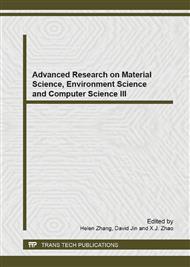p.101
p.105
p.109
p.115
p.119
p.123
p.128
p.132
p.136
Experimental Study on Geometric Optimization of Thermoelectric Generation
Abstract:
Thermoelectric generation (TEG) produces electric energy from thermal energy directly, stably and environmental-friendly. As is pointed out, TEG performance is influenced by not only the intrinsic property of the material, but also the geometry designed, the operation conditions and the load scale as well. This paper intend to indicates how the temperature differential and the load resistance influence the output, how geometry demonstrate the performance of a TEG by experimental method. Test results is quite fit for the theoretic analysis.
Info:
Periodical:
Pages:
119-122
Citation:
Online since:
January 2014
Authors:
Price:
Сopyright:
© 2014 Trans Tech Publications Ltd. All Rights Reserved
Share:
Citation:


